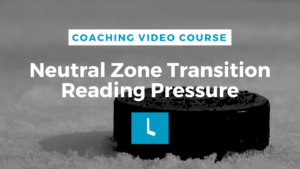It Doesn’t Matter What you Call it. Fort, House, Castle, Slot? Just Call it Often!
Defending the fort solidifies your defensive zone play. Your team will survive tough shifts stuck in the defensive zone, limit shots on goal, and have a foundation from which you mount your attack. In Module 1.1 of How to Play Hockey we spend considerable time addressing key terms and expressions that will increase your Hockey IQ. Understanding the game at a high degree of detail actually allows players to use gut instincts. You can empower them to react quickly to situations as they arise. The following video taken from Module 1.1 addresses an area of the ice that of great importance both offensively, and defensively. Names for this area of the ice vary from coach to coach, but they all describe the significance of the area in front of the net. Fort, House, Castle, Home, Prime Scoring Area, and PSA to name a few. “Defend the Fort”, “Protect the House”, “Protect our Prime Scoring Area” are all commonly heard cues in a hockey locker room and all mean the same thing.
[maxbutton id=”2″ text=”Watch full video & 100+ more !” ]
Prime Scoring Area Points of Interest:
 80% of goals result from shots taken from inside the fort, most of which are rebounds.
80% of goals result from shots taken from inside the fort, most of which are rebounds.- Modern goalies call this area the Blocking Zone, and butterfly in a blocking stance to cover the bottom half of the net before the release of the shot.
- Wingers need to crash the fort, or prime scoring area, on offense looking for secondary scoring opportunities and create chaos for the opposition.
- In the defensive zone, we strongly believe those same wingers need to collapse inside the prime scoring area if the puck is loose and defenders are scrambling for it.
The Controversy over collapsing into the fort:
Some coaches disagree with this last point above and think the wingers should stay out covering the defensemen on the blueline even with the puck is in the fort. I ask you this… how dangerous are the defensemen on the blue line, compared to the forwards, while the puck sits loosly in the prime scoring area? I’d rather save a goal by collapsing in front as a winger rather than standing beside the defenseman I am supposed to cover, watching the puck go into my own team’s net, claiming, “I had my guy!”.
Even if the puck gets out to the winger’s defenseman, the winger can get out to the defenseman in the shooting lane and apply pressure within a split second. The winger will either block the shot or by protecting the shooting lane, force the shot to sail wide and miss the net. However, the winger must never get caught ‘puck watching’ and forget about his/her coverage on the point. That scenario is bad news, and gives the naysayers of this collapsing strategy a valid argument to make.
In simple terms, teams win and lose games in the Fort. You should really take a few more minutes with us today to watch the rest of the video as a true student of the game! We have 800+ minutes of video content waiting for you as a member of www.howtoplayhockey.ca.
If you like this post, have added value to contribute, or disagree, I’d love to hear from you. Please comment below.
—






